Constitutive androstane receptor-mediated up-regulation of ATP-driven xenobiotic efflux transporters at the blood-brain barrier
- PMID: 20547735
- PMCID: PMC2939489
- DOI: 10.1124/mol.110.063685
Constitutive androstane receptor-mediated up-regulation of ATP-driven xenobiotic efflux transporters at the blood-brain barrier
Abstract
ATP-driven efflux transporters at the blood-brain barrier both protect against neurotoxicants and limit drug delivery to the brain. In other barrier and excretory tissues, efflux transporter expression is regulated by certain ligand-activated nuclear receptors. Here we identified constitutive androstane receptor (CAR) as a positive regulator of P-glycoprotein, multidrug resistance-associated protein 2 (Mrp2), and breast cancer resistance protein (BCRP) expression in rat and mouse brain capillaries. Exposing rat brain capillaries to the CAR activator, phenobarbital (PB), increased the transport activity and protein expression (Western blots) of P-glycoprotein, Mrp2, and BCRP. Induction of transport was abolished by the protein phosphatase 2A inhibitor, OA. Similar effects on transporter activity and expression were found when mouse brain capillaries were exposed to the mouse-specific CAR ligand, 1,4-bis-[2-(3,5-dichloropyridyloxy)]benzene (TCPOBOP). In brain capillaries from CAR-null mice, TCPOBOP did not increase transporter activity. Finally, treating mice with 0.33 mg/kg TCPOBOP or rats with 80 mg/kg PB increased P-glycoprotein-, Mrp2-, and BCRP-mediated transport and protein expression in brain capillaries assayed ex vivo. Thus, CAR activation selectively tightens the blood-brain barrier by increasing transport activity and protein expression of three xenobiotic efflux pumps.
Figures


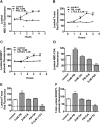
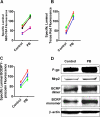
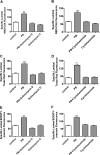
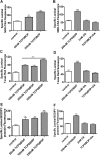
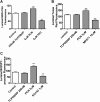
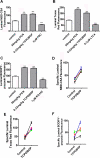


Similar articles
-
In vivo and ex vivo regulation of breast cancer resistant protein (Bcrp) by peroxisome proliferator-activated receptor alpha (Pparα) at the blood-brain barrier.J Neurochem. 2015 Dec;135(6):1113-22. doi: 10.1111/jnc.13389. Epub 2015 Nov 13. J Neurochem. 2015. PMID: 26465636 Free PMC article.
-
Xenobiotic Nuclear Receptors Pregnane X Receptor and Constitutive Androstane Receptor Regulate Antiretroviral Drug Efflux Transporters at the Blood-Testis Barrier.J Pharmacol Exp Ther. 2017 Dec;363(3):324-335. doi: 10.1124/jpet.117.243584. Epub 2017 Sep 28. J Pharmacol Exp Ther. 2017. PMID: 28970358
-
Differential regulation of sinusoidal and canalicular hepatic drug transporter expression by xenobiotics activating drug-sensing receptors in primary human hepatocytes.Drug Metab Dispos. 2006 Oct;34(10):1756-63. doi: 10.1124/dmd.106.010033. Epub 2006 Jul 12. Drug Metab Dispos. 2006. PMID: 16837569
-
Regulation of ABC transporters blood-brain barrier: the good, the bad, and the ugly.Adv Cancer Res. 2015;125:43-70. doi: 10.1016/bs.acr.2014.10.002. Epub 2015 Jan 8. Adv Cancer Res. 2015. PMID: 25640266 Review.
-
[Development of Novel Methodology and Its Application for Clarifying the Transport Function of the Blood-brain Barrier].Yakugaku Zasshi. 2021;141(4):447-462. doi: 10.1248/yakushi.20-00232. Yakugaku Zasshi. 2021. PMID: 33790111 Review. Japanese.
Cited by
-
A retinoic acid-enhanced, multicellular human blood-brain barrier model derived from stem cell sources.Sci Rep. 2014 Feb 24;4:4160. doi: 10.1038/srep04160. Sci Rep. 2014. PMID: 24561821 Free PMC article.
-
Nose-to-Brain Delivery of Antiviral Drugs: A Way to Overcome Their Active Efflux?Pharmaceutics. 2018 Mar 26;10(2):39. doi: 10.3390/pharmaceutics10020039. Pharmaceutics. 2018. PMID: 29587409 Free PMC article. Review.
-
Regulation of ABC transporters by sex steroids may explain differences in drug resistance between sexes.J Physiol Biochem. 2023 Aug;79(3):467-487. doi: 10.1007/s13105-023-00957-1. Epub 2023 Mar 30. J Physiol Biochem. 2023. PMID: 36995571 Free PMC article. Review.
-
Opioids and the Blood-Brain Barrier: A Dynamic Interaction with Consequences on Drug Disposition in Brain.Curr Neuropharmacol. 2017 Nov 14;15(8):1156-1173. doi: 10.2174/1570159X15666170504095823. Curr Neuropharmacol. 2017. PMID: 28474563 Free PMC article. Review.
-
Induction of P-glycoprotein by antiretroviral drugs in human brain microvessel endothelial cells.Antimicrob Agents Chemother. 2013 Sep;57(9):4481-8. doi: 10.1128/AAC.00486-13. Epub 2013 Jul 8. Antimicrob Agents Chemother. 2013. PMID: 23836171 Free PMC article.
References
-
- Abbott NJ, Patabendige AA, Dolman DE, Yusof SR, Begley DJ. (2010) Structure and function of the blood-brain barrier. Neurobiol Dis 37:13–25 - PubMed
-
- Akanuma S, Hori S, Ohtsuki S, Fujiyoshi M, Terasaki T. (2008) Expression of nuclear receptor mRNA and liver X receptor-mediated regulation of ABC transporter A1 at rat blood-brain barrier. Neurochem Int 52:669–674 - PubMed
-
- Allen JD, van Loevezijn A, Lakhai JM, van der Valk M, van Tellingen O, Reid G, Schellens JH, Koomen GJ, Schinkel AH. (2002) Potent and specific inhibition of the breast cancer resistance protein multidrug transporter in vitro and in mouse intestine by a novel analogue of fumitremorgin C. Mol Cancer Ther 1:417–425 - PubMed
-
- Anapolsky A, Teng S, Dixit S, Piquette-Miller M. (2006) The role of pregnane X receptor in 2-acetylaminofluorene-mediated induction of drug transport and -metabolizing enzymes in mice. Drug Metab Dispos 34:405–409 - PubMed
-
- Bauer B, Hartz AM, Fricker G, Miller DS. (2004) Pregnane X receptor up-regulation of P-glycoprotein expression and transport function at the blood-brain barrier. Mol Pharmacol 66:413–419 - PubMed
Publication types
MeSH terms
Substances
Grants and funding
LinkOut - more resources
Full Text Sources
Other Literature Sources
Miscellaneous

